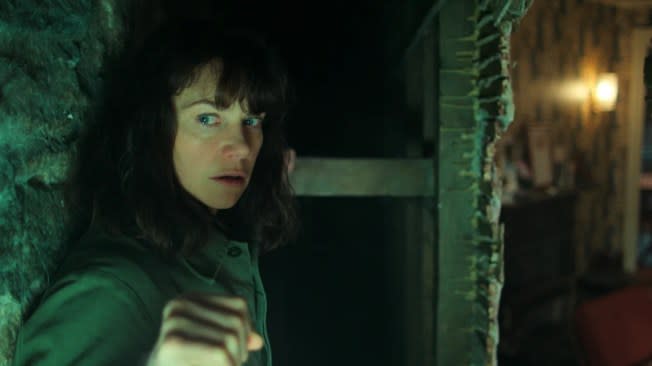‘Woman in the Wall’ Creator Explains His Choices in Ending Lorna’s Story
In the finale of Showtime’s “The Woman in the Wall,” Lorna (Ruth Wilson) finally gets the answer she’s been seeking about what happened to her daughter, who — as happened to thousands of mothers in Ireland’s Magdalene Laundries in real life — was taken from her shortly after she was born.
TheWrap spoke with series creator Joe Murtagh about the choices he made in wrapping up Lorna’s story, why he made “The Woman in the Wall” in the first place and how he got Sinéad O’Connor’s blessing to use the song that closes out the series.
How did you first learn about the Magdalene laundries?
I saw the Peter Mullan film “The Magdalene Sisters” in my early 20s. I couldn’t believe the story and the horror of it and the scale of it. The hundreds of thousands of lives that it touched, and how recent it was, just didn’t match up at all with how few people seem to know about it. The real reason for doing this was to try and get the story and get it out there in such a way to gather as much of an audience as I possibly could.

The series ends with Lorna finally finding out the daughter who was taken from her is alive and she’s put in touch with her. Did you always plan to end the show on that ray of hope?
It was a careful balancing act, because this really did happen to a lot of people. And there are lots of people out there who never got answers and it’s too late to get answers now. So I didn’t want to do a disservice to the truth by making the ending too hopeful. But Lorna, as a character herself, deserved some ray of hope, in the end of it all. So it was a careful balancing act; I wanted to achieve optimism, but not too much optimism.
Did you contemplate showing that conversation between Lorna and her daughter, or did you want to leave it where it is?
It felt like it was a private moment between her and her daughter. It felt like it would be disrespectful to her as a character. It didn’t feel right for us to see that. But I also think it allows the audience to imagine that conversation and how that’s going to go. I think it’s one of those cases where letting the audience fill in the blanks was more powerful.
What did you base the character of James Coyle (Dermot Crowley) on? He appears to be helping the victims, but is actually trying to cover up for his own complicity in the laundries.
For me, the inspiration behind him wasn’t so much a person as it was the bureaucratic state and the response that survivors seem to have gotten anytime they tried to look for justice — or look for just any basic human treatment, to be honest — from the state.
It’s bureaucracy at its absolute worst, and that kind of cold, callous, unfeeling attitude towards survivors and adoptees. That’s where the Coyle side of it came from — not so much a person, but rather a nationwide response, I guess you could call it.

We don’t realize at first that this case affects Colman (Daryl McCormack) quite personally, but he was born in a “mother-and-baby home,” and he becomes as obsessed as Lorna with finding out the truth.
With Colman’s story, I wanted to dig into the adoptee’s side of the coin. And I wanted a young detective to show how recent this all is and how this is still affecting the current generations of people.
The series ends with Sinéad O’Connor’s previously unreleased “The Magdalene Song.” Was she still alive when you were putting this together?
She was, yeah. The inclusion of that song is really down to our producer, but also our composer David Holmes, who made that fantastic score for the show. He actually produced Sinéad’s final album. He was the one who got permission from her family. Sinéad gave us her blessing before she passed away — herself having been in a Magdalene laundry just makes it all the more poignant.
But she wasn’t part of the mother-and-baby homes?
No — there were lots and lots of different reasons why girls went in there. The girls who were pregnant outside of wedlock were actually just a smaller portion. I can’t really speak too much about her, but if you read up about her experiences, I believe it was actually a young nun who bought her first guitar. [O’Connor, who died in July 2023, was sent to the Sisters of Our Lady of Charity laundry in Dublin at age 14 after she was labeled a “problem child.”]
Did anyone ever involved with the laundries face any consequences in real life?
Not that I’m aware of. That’s the other infuriating part about it. That’s why I didn’t want to wrap this up in a neat little bow. The perpetrators, as far as I’m aware, have not suffered any kind of consequences, and a lot just never will.
The post ‘Woman in the Wall’ Creator Explains His Choices in Ending Lorna’s Story appeared first on TheWrap.


